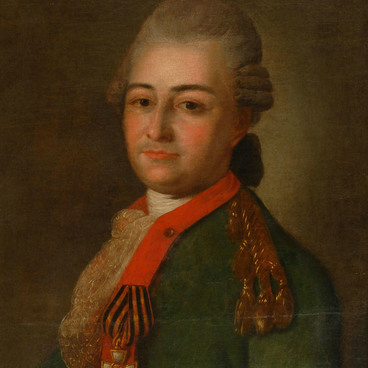The painting depicts Tsarevich Alexei Petrovich, the eldest son of Peter the Great from his first marriage with Eudoxia Lopukhina. Alexei Petrovich studied in the city of Dresden, travelled across Europe and carried out his father’s instructions during the years of the Great Northern War. At the urging of Peter I, the Prince married Princess Charlotte Christine Sophie Brunswick-Wolfenbüttel. She bore him two children — Natalia and the future ruler Peter II.
Alexei Petrovich did not support the innovative reforms of the first Russian emperor. The misunderstanding between father and son peaked in 1716, when Alexei secretly left for Vienna under the protection of the Austrian Emperor Charles VI. There he lived in the castle of Ehrenberg in Tyrol, and from May 1717 — in Naples. Peter I instructed his associates to find the Tsarevich and bring him back to Russia. The emperor wrote to his son: “If you are afraid of me, then I reassure you and promise God and His judgment that there will be no punishment for you, and I will show you my best love if you abide by my will and return. If you do not do so, then… as your sovereign, I declare you a traitor and I will not stop short of imposing any measure against you as a traitor and reviler of one”s own father, in which God will help me as truth is on my side”. The letter did not convince Alexei, but he soon succumbed to the persuasion of Pyotr Tolstoy and Alexander Rumyantsev and returned to his homeland. In Russia, the tsarevich was arrested, sentenced to death as a traitor and imprisoned in the Peter and Paul Fortress. In July 1718, Alexei Petrovich died under unclear circumstances.
The official version said that the prince died “from a stroke”, repenting of his deed. There is also a theory according to which Alexei was secretly killed in prison by order of Peter I, but the researchers did not find reliable evidence to support this opinion. However, the historian and archaeographer Nikolay Ustryalov in the 19th century discovered documents that described how, after passing the sentence, they tortured Alexei Petrovich, which could have led to his death.
Alexei Petrovich did not support the innovative reforms of the first Russian emperor. The misunderstanding between father and son peaked in 1716, when Alexei secretly left for Vienna under the protection of the Austrian Emperor Charles VI. There he lived in the castle of Ehrenberg in Tyrol, and from May 1717 — in Naples. Peter I instructed his associates to find the Tsarevich and bring him back to Russia. The emperor wrote to his son: “If you are afraid of me, then I reassure you and promise God and His judgment that there will be no punishment for you, and I will show you my best love if you abide by my will and return. If you do not do so, then… as your sovereign, I declare you a traitor and I will not stop short of imposing any measure against you as a traitor and reviler of one”s own father, in which God will help me as truth is on my side”. The letter did not convince Alexei, but he soon succumbed to the persuasion of Pyotr Tolstoy and Alexander Rumyantsev and returned to his homeland. In Russia, the tsarevich was arrested, sentenced to death as a traitor and imprisoned in the Peter and Paul Fortress. In July 1718, Alexei Petrovich died under unclear circumstances.
The official version said that the prince died “from a stroke”, repenting of his deed. There is also a theory according to which Alexei was secretly killed in prison by order of Peter I, but the researchers did not find reliable evidence to support this opinion. However, the historian and archaeographer Nikolay Ustryalov in the 19th century discovered documents that described how, after passing the sentence, they tortured Alexei Petrovich, which could have led to his death.


